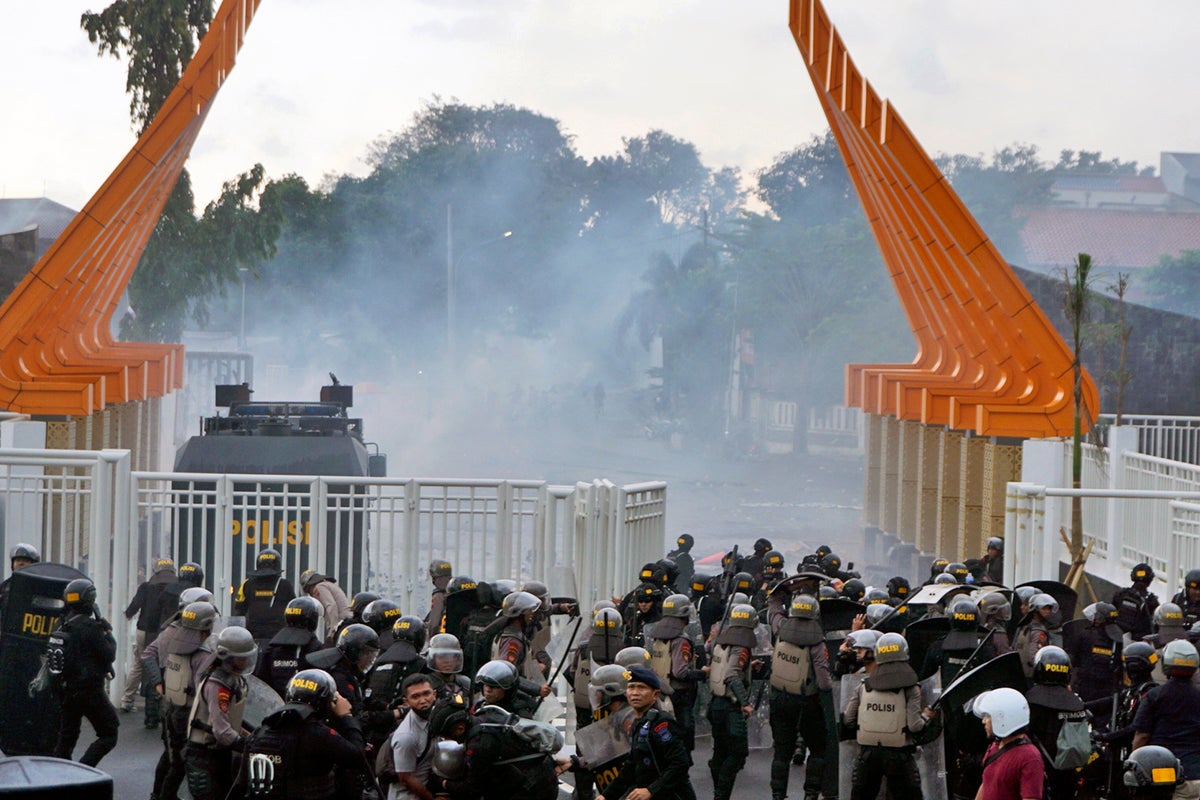
Indonesian police fired tear gas outside a soccer stadium to disperse fans who were trying to force their way into a match in Central Java province on Friday, months after the use of tear gas in another stadium caused one of the world's worst sporting disasters.
No injuries were reported on Friday, when thousands of supporters of PSIS Semarang fled tear gas at the entrance to Jatidiri Stadium in Semarang city after they attempted to enter the closed-door match to support their team against Persis Solo, a team from Surakarta city.
Organizers and police had decided to hold the match without spectators to avoid possible violence.
Semarang Police Chief Irwan Anwar said the decision was made because of the experience from the previous match between the two teams in Surakarta, when PSIS Semarang supporters were attacked as they returned home.
Fans attempting to enter the stadium pushed and then threw objects at police officers who tried to hold them back. The officers first used a water cannon and then fired tear gas.
“The use of tear gas was carried out in accordance with the procedures for using force and was outside the match venue, not inside the stadium,” said Semarang Deputy Police Chief Yuswanto Ardi.
Last October, police used tear gas to halt fans from rushing onto the pitch in a stadium in East Java's Malang city, setting off a panicked run for the exits in which 135 people died.
Prosecutors charged five men — three police officials who allowed or ordered officers to use tear gas, the chair of the organizing committee and the security chief — with criminal negligence causing death and bodily harm, which carries a penalty of up to five years in jail.
An investigation team set up by President Joko Widodo in response to a national outcry over the deaths concluded that the tear gas was the main cause of the crowd surge. It said police on duty had no knowledge that the use of tear gas is prohibited at soccer stadiums and used it “indiscriminately” on the field, in the stands and outside the stadium, causing more than 42,000 spectators inside the 36,000-seat stadium to rush to the exits — several of which were locked.
It was among the deadliest soccer-related tragedies since a 1964 crush in Peru killed over 300 people.
Soccer is the most popular sport in Indonesia and the domestic league is widely followed. Fans are strongly attached to their clubs, and the fanaticism often results in violence and hooliganism.







